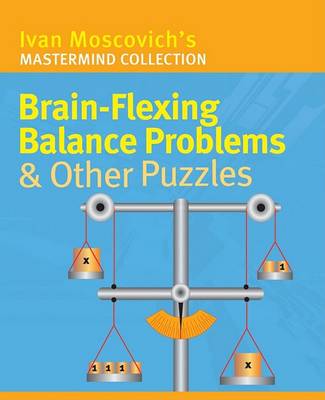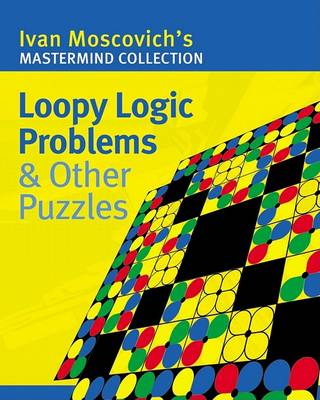Ivan Moscovich's Mastermind Collection S.
4 total works
This book presents puzzles in perpetual motion brought to you from the prolific puzzle-master Ivan Moscovich. Many of these bright brainteasers focus on ingenious, moving mechanisms. Check out a perpetuum mobile invented by a famous American mathematician and see if you can successfully explain its theoretical principle of operation. A cartoon depicts a classic Lewis Carroll conundrum: there's a monkey hanging on a tree holding one end of a rope while a bunch of bananas balance the other end in a state of equilibrium. What will happen if the monkey starts to climb? Other problems deal with gears and levers, while still more shift to number, counting, and calculation challenges.
Calculate velocity; explain the Maltese cross mechanism that's the basis of the motion picture projector; and work out the ways different pendulums (including Foucault's famous version) swing. Every attractive page in master Ivan Moscovich's eleventh collection of brain-busters offers a tricky puzzle pleasure. Sixteen tiles show either a crowned frog or a crown prince: distribute them randomly on a game board, face down, and then see if you can come up with a configuration that will allow you to flip them so that all frogs or all princes will turn up. Discern the logic of a number pattern in a partially filled-out grid and discover the missing numerals. From gnomic expansions to infinity and limit, these dilemmas demand a smart solver.
What makes these puzzles so special? Not only does each one illustrate some of the most classic theories in math, logic, and perception, but they're eye-catching too. Stare at brilliantly hued concentric circles, inspired by the "video active" paintings of the Parisian artist Isia Leviant; if you continue to look long enough, a spinning white blur will appear. Or imagine that you have a drawerful of socks in different colors - 7 red, 7 yellow, and 7 green pairs. If you pulled some out in complete darkness, how many would you have to take before you'd be sure of having a pair in each color? Or solve word puzzles, paradoxes, and the mystery of the rolling photo cube.
Colorful geometrical pentagons, composed of pentagons and triangles and dissected into pieces: Can you put the shapes together again to form a whole? A classic paradox about the nature of motion from a famous Greek mathematician: Can you see what's wrong with it? Put on your thinking cap and prepare to give your math and logic abilities a workout, because these super-looking puzzles demand real brainpower. Solve a graphic problem that involves the calculation of a square root. Examine six linear processions of egg-carrying ants, and figure out which lines are "surprising" and which ones aren't. Go step by step through a multihued grid and try to find 32 different configurations within. These puzzles are challenging, entertaining, and satisfying to unravel.



